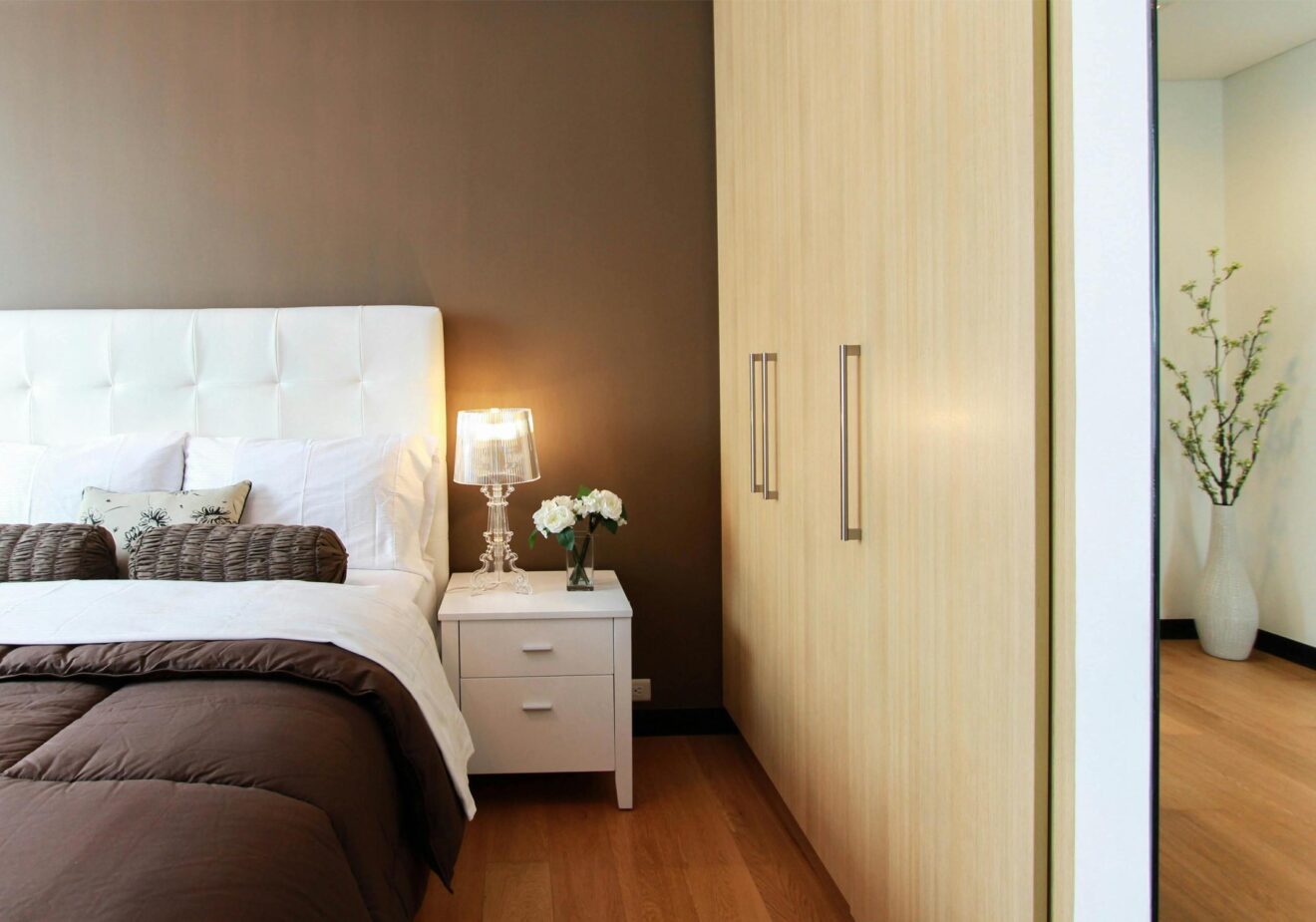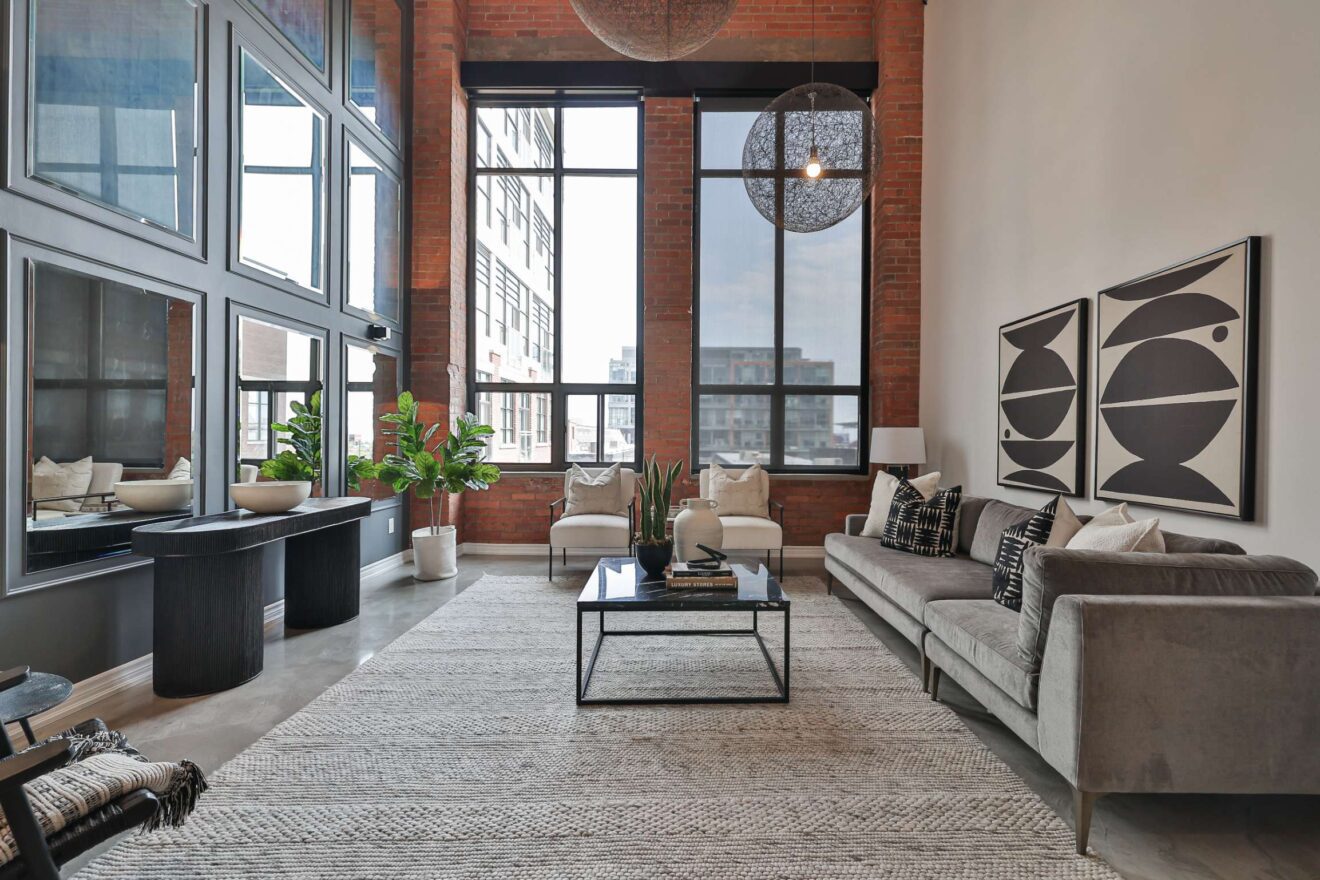October 24th, 2024 | Style And Design
How to Design a Bedroom for Optimal Rest

In the realm of interior design, many aspects of the modern bedroom are catered to one’s daytime needs. Utilitarian elements such as side tables and dressers, paired with strictly decoration furnishings are considered to be essential elements of the bedroom. However, it is imperative to not overlook the space’s primary function – sleeping quarters.
With this in mind, there are numerous design techniques that can be incorporated to actively encourage and improve sleep. In this article, we will explore a selection of them to help you create a bedroom space that is optimized for nourishing, high-quality rest.
Consistent, well-rounded sleep is essential for a child’s development. This is why a restful bedroom space is one of the essential features of a family home. Click here for further insights.
Separation From Busy Spaces
Whether your abode is shared with a spouse and young children or you live independently, your home is a hub of activity. Therefore, an idyllic bedroom space is one that is well-removed from active areas in the home, including the kitchen, living room, and in some circumstances, other occupied bedrooms. Consider that even with a closed door and windows, external elements from beyond the room may seep in, creating distraction, awakenings, and other stressors.
Even if you live alone, maintaining separation from the parts of your home where your brain is active and operating consistently during the day can encourage rest during the evening.
Of course, existing homeowners may have limited flexibility in where sleeping quarters are located. However, wellness-conscious buyers should keep this concept in mind while searching for a future home.
Looking for more sophisticated insights about luxury-minded design trends? Explore these posts from our blog.
Home Design Trends That Foster Human Connection
The New Modern: Forward-Thinking Design Trends
Green Luxury: The Rise of Eco-Conscious Home Trends
Ambiance & Spatial Freedom
A room that feels busy, cluttered, or claustrophobic may induce stress, interrupting your body’s ability to relax. Therefore, maintaining an abundance of open space is another pillar of rest-optimizing bedroom design. Restrict belongs and furnishings with the bedroom to only the essentials.
As part of reducing clutter and other distractions from your bedroom, you should consider carefully with technologies you elect to bring into your sleeping quarters. For several decades now the television has been a common element of the modern bedroom. However, while entertaining, the artificial illumination from the screen, in addition to the stimulation of watching programs and movies can make it more difficult to fall asleep.
While handheld devices such as cell phones and tablets are pragmatic tools of communication and entertainment, they too are a source of disruption. Consider limiting which devices you allow into the bedroom, and further, try to eliminate or greatly reduce screen time between one and two hours before bed.
Light Control
Excessive light exposure in the evening and morning can be disruptive to one’s sleep cycles. Avoid the use of direct overhead lighting as these fixtures often produce harsh or overly-bright tones. Instead, utilizing smaller, softer warm-hue lighting such as floor and table lamps or sconces can encourage rest and relaxation.
Beyond selecting interior lighting with discernment, it is equally important to strategically manage incoming light from external sources such as windows and below doors. Install high-quality, light-blocking curtains to ensure your sleep is uninterrupted by rising or setting sun. Using these heavy curtains as a base, you may also add tasteful drapes for a softer diffusion of light during daytime hours.
Dedicated spaces are a hallmark of upscale interior design. Consider these other blog posts for further reading.
Home Office Design: Fusing Style & Productivity
Constructing an In-home Wine Cellar: The Importance of Location
Crafting a Serene Home Spa
Temperature Maintenance
While not an aesthetic element of bedroom design, temperature maintenance is another paramount aspect of curating a sleep-friendly environment. Personal preferences may vary, however, the idyllic temperature range for sleep is generally considered to be between sixteen and twenty-two degrees Celsius, or sixty to seventy-one degrees Fahrenheit.
Rather than supplementing lighter, more breathable bed sheets with bulky throw blankets during the cooler months, consider changing bedding with outside temperatures. Seasonal-specific bedding ensures maximal comfort while maintaining a cohesive visually appealing look.
In Toronto, many properties, especially those found in the city’s most established neighbourhoods are beyond a century old. Hence, some homes do not yet feature modern temperature maintenance systems such as central air, independent space heating, or smart thermostat technologies. That said, these upgrades are relatively simple to accomplish, and, beyond merely improving the comfort of your bedroom, offer a compelling return on investment. In the future, should you elect to sell your home, buyers will be eager to pay a premium for a home with turnkey temperature regulation.
Looking to elevate your home’s value and ambience? As distinguished leaders in luxury Toronto real estate, Armin Group can help. Send us an email, or call our team at 416.960.9995 to begin your journey.






